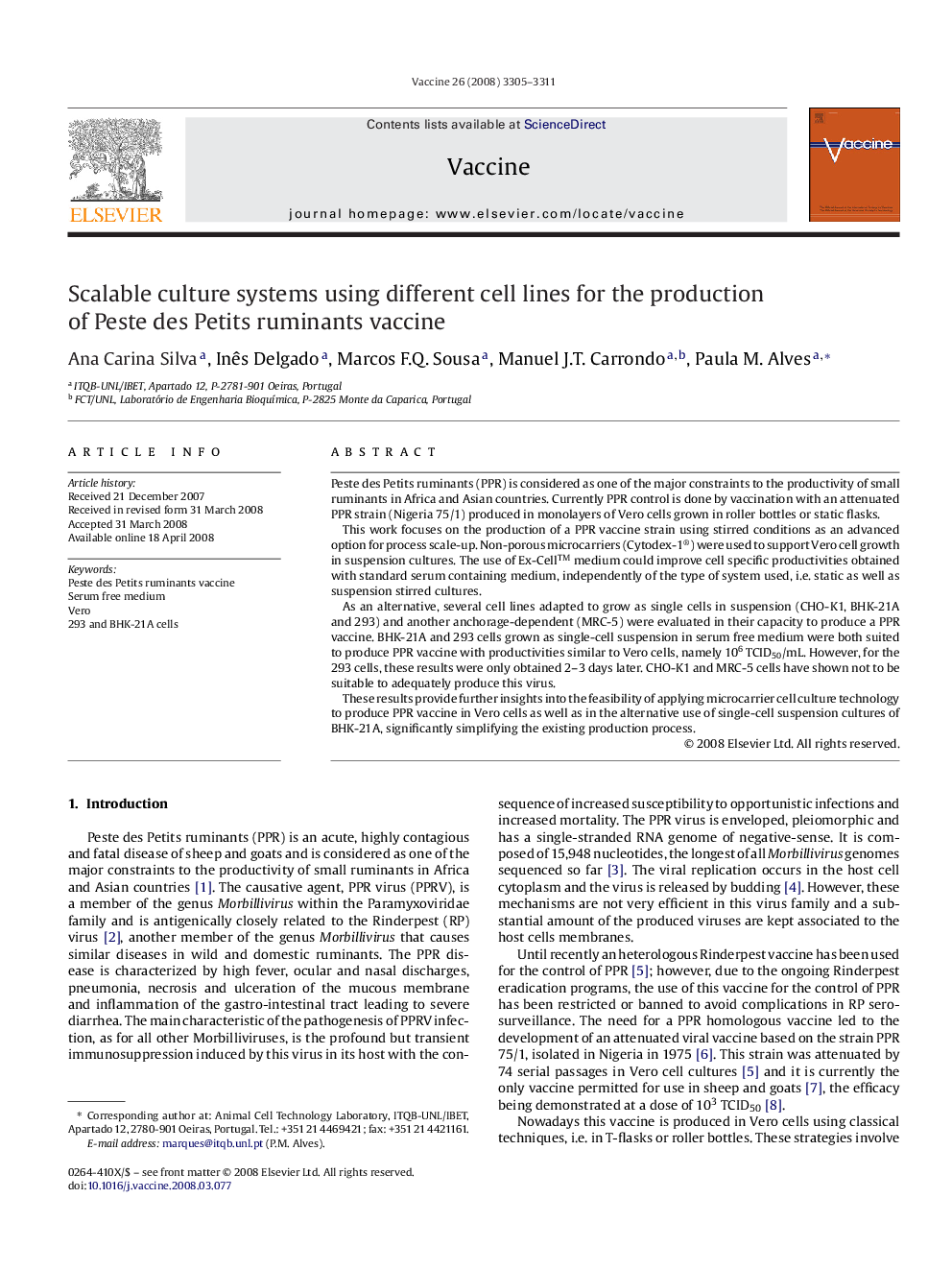| Article ID | Journal | Published Year | Pages | File Type |
|---|---|---|---|---|
| 2407841 | Vaccine | 2008 | 7 Pages |
Peste des Petits ruminants (PPR) is considered as one of the major constraints to the productivity of small ruminants in Africa and Asian countries. Currently PPR control is done by vaccination with an attenuated PPR strain (Nigeria 75/1) produced in monolayers of Vero cells grown in roller bottles or static flasks.This work focuses on the production of a PPR vaccine strain using stirred conditions as an advanced option for process scale-up. Non-porous microcarriers (Cytodex-1®) were used to support Vero cell growth in suspension cultures. The use of Ex-Cell™ medium could improve cell specific productivities obtained with standard serum containing medium, independently of the type of system used, i.e. static as well as suspension stirred cultures.As an alternative, several cell lines adapted to grow as single cells in suspension (CHO-K1, BHK-21A and 293) and another anchorage-dependent (MRC-5) were evaluated in their capacity to produce a PPR vaccine. BHK-21A and 293 cells grown as single-cell suspension in serum free medium were both suited to produce PPR vaccine with productivities similar to Vero cells, namely 106 TCID50/mL. However, for the 293 cells, these results were only obtained 2–3 days later. CHO-K1 and MRC-5 cells have shown not to be suitable to adequately produce this virus.These results provide further insights into the feasibility of applying microcarrier cell culture technology to produce PPR vaccine in Vero cells as well as in the alternative use of single-cell suspension cultures of BHK-21A, significantly simplifying the existing production process.
